India's Maha Kumbh festival sees 15 million people take holy dip on first day
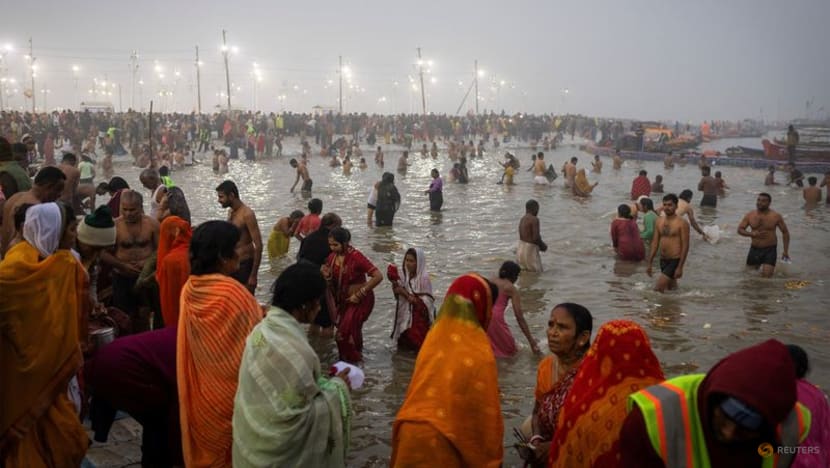
Devotees take a holy dip at Sangam, the confluence of the Ganges and Yamuna rivers with the mythical, invisible Saraswati river, during the "Maha Kumbh Mela", in Prayagraj, India, on Jan 13, 2025. (Photo: Reuters/Adnan Abidi)
PRAYAGRAJ, India: Nearly 15 million Hindus, six times the number expected, took a dip in freezing waters seeking absolution of their sins on Monday (Jan 13), the first day of India's festival that could draw the world's largest single gathering of humanity.
Held every 12 years, the Maha Kumbh Mela or Great Pitcher Festival, as the religious event in the city of Prayagraj in the northern state of Uttar Pradesh is called, attracts more than 400 million visitors, both Indians and tourists.
State Chief Minister Yogi Adityanath said 15 million devotees "earned the holy benefit of bathing in the uninterrupted and clean Triveni", or the confluence of the rivers.
Officials had expected the first ritual dip to draw 2.5 million visitors, followed by a "royal bath" on Tuesday reserved for ascetics, in the belief that it absolves them of sin and confers salvation from the cycle of life and death.
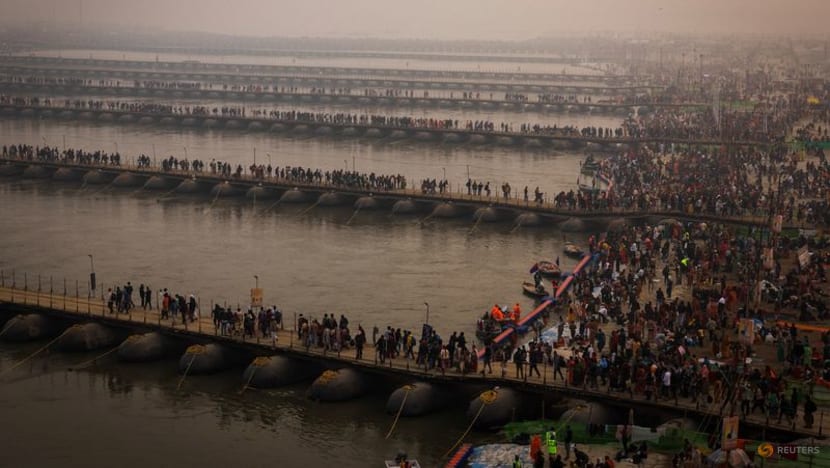
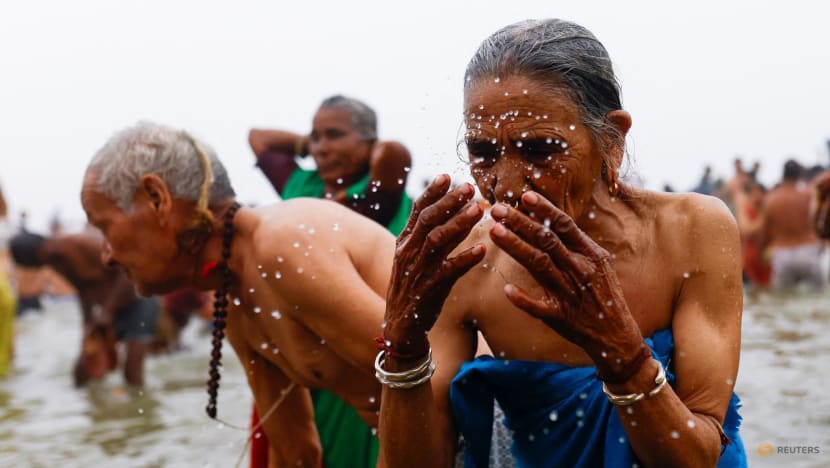
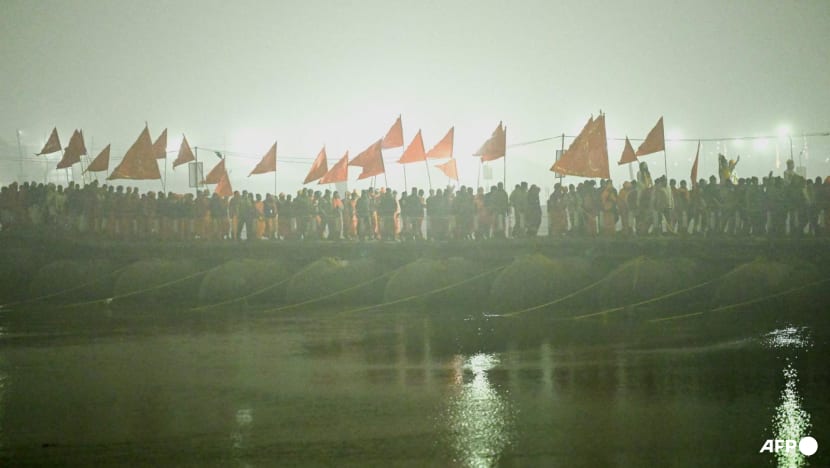
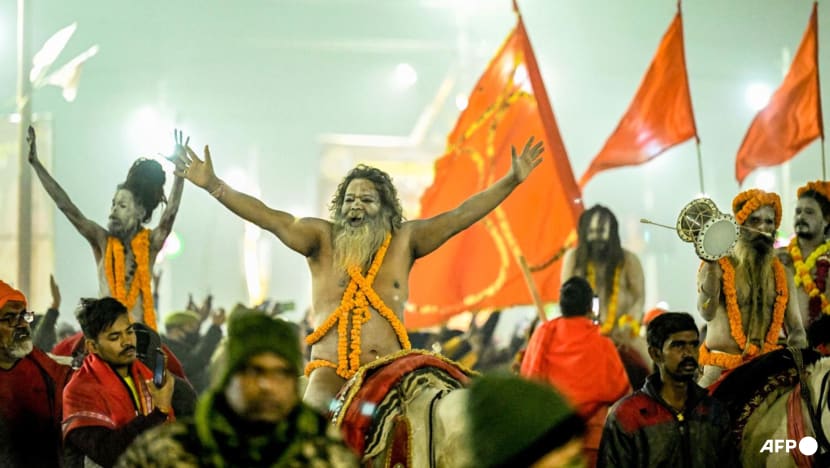
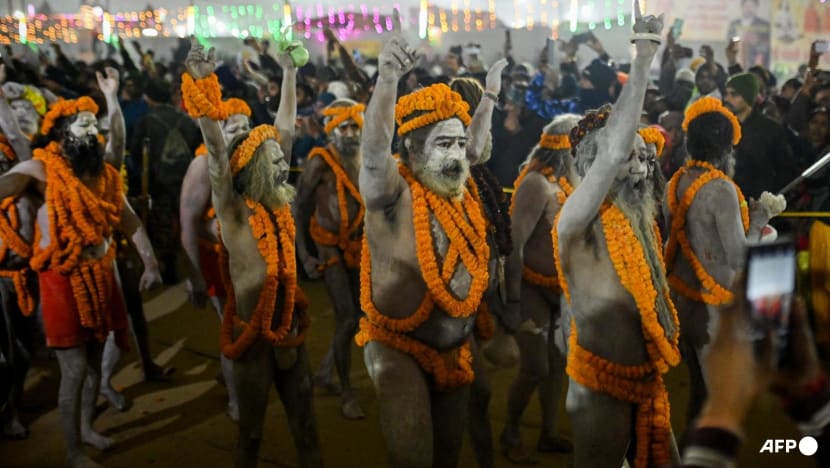
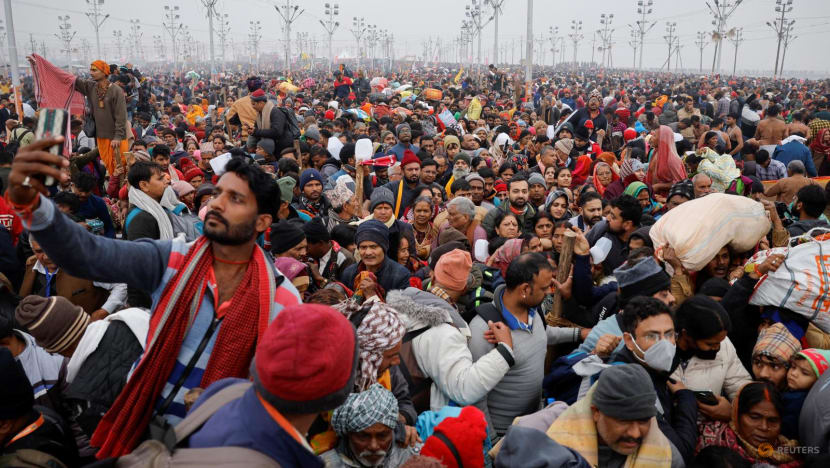
As many as 40,000 police officers are on guard to provide security and help manage the crowds, while surveillance cameras equipped with artificial intelligence AI capabilities will ensure continuous monitoring.
"It is our festival," said ascetic Hazari Lala Mishra, who took the holy dip himself before sunrise, which is considered an auspicious time. "(It is) the only festival for hermits and monks, and we wait for it desperately."
Amid public warnings to walk in lines without halting anywhere, droves of marchers headed for bathing positions to await sunrise at the confluence of the three holy rivers, the Ganges, Yamuna, and the mythical, invisible Saraswati.
Advancing toward the waters' edge in the winter morning fog, they chanted invocations such as "Har Har Mahadev" and "Jai Ganga Maiyya" in praise of the Hindu deities Lord Shiva and Mother Ganga, who personifies India's holiest river.
"I am excited but now scared because I didn't expect this crowd," said Priyanka Rajput, a fashion model from Delhi, the capital, who accompanied her mother.
"This is my first Kumbh and I came here only because my mother is very spiritual."
What is the Maha Kumbh Mela?
Maha Kumbh Mela involves a series of ritual baths by Hindu sadhus, or holy men, and other pilgrims at the point where the mythical Saraswati river is believed to meet the Ganges and Yamuna rivers.
The place where the three rivers converge is considered the holiest in Hindu faith and submerging oneself there is believed to cleanse sins and bring salvation.
The most auspicious days occur in cycles of 12 years during the Maha Kumbh Mela, which runs from Monday (Jan 13) to Feb 26 this year.
Bathing takes place every day of the festival, but on the most auspicious dates, monks will charge toward the holy rivers at dawn, naked and with ash-smeared on their bodies.
In 2017, UNESCO placed the Kumbh Mela on its listing of the Intangible Cultural Heritage of Humanity.
The festival is so vast that it has been captured by satellites in space.
How did it come about?
The festival is rooted in the Hindu belief that the god Vishunu spilled drops of the elixir of immortality from his “kumbh” - pitcher - during a celestial battle.
The fight spanned 12 days, the equivalent of 12 human years, which is why a Maha Kumbh Mela is held in 12 year cycles.
During the battle, drops of the elixir are believed to have fallen at four places - Prayagraj, Haridwar, Nashik and Ujjain.
A Kumbh Mela is held in these cities every three years in rotation on a date prescribed by astrology. However, a Maha Kumbh Mala, which is prefixed with the term “maha” or great, is considered more auspicious and attracts the largest number of worshipers.
What makes this year's festival unique is that the current alignment of planets and stars is identical to what existed at the moment of the spill, said Hindu seer Mahant Ravindra Puri, as reported by BBC.
"Such perfection is being observed after 12 Kumbh festivals or 144 years," he said.
Why is the festival significant for India’s leaders?
For Indian Prime Minister Narendra Modi and his Bharatiya Janata Party (BJP), this year’s Maha Kumbh Mela plays an integral role in their Hindu nationalism agenda.
About 80 per cent of the country’s population are Hindus and Modi’s administration has been prioritising its Hindu right-wing agenda over the last few years.
While the event will help add to the BJP's record of promoting Hindu cultural symbols for their support base, experts believe the government also hopes the festival brings attention to religious tourism.
More than US$765 million was allocated for the festival and state authorities are hoping that it will rake in US$25 billion in revenue.
CROWD MANAGEMENT
A showcase mix of religion, spirituality and tourism like no other in India, the event offers a test in crowd management for authorities in the world's most populous country who must balance arrangements for millions while retaining its sanctity.
A temporary city sprawling over 4,000ha has sprung up along the river banks with 150,000 tents to house the visitors and is equipped with 3,000 kitchens, 145,000 restrooms and 99 parking lots.
Authorities are also installing as many as 450,000 new electricity connections, with the Kumbh expected to consume more power than 100,000 urban apartments require in a month.
Indian Railways has added 98 trains to make 3,300 trips carrying festival visitors, in addition to regular services to Prayagraj.
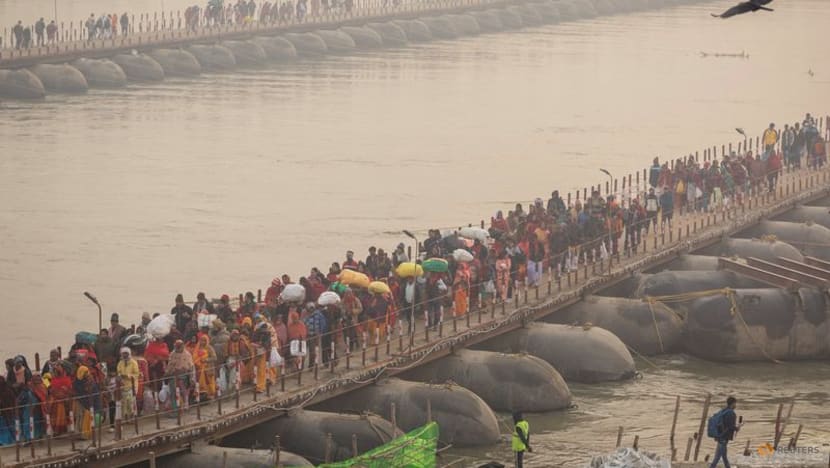
Uttar Pradesh is governed by Prime Minister Narendra Modi's Hindu nationalist Bharatiya Janata Party (BJP), which hopes that a successful Kumbh Mela will burnish its efforts to reclaim and glorify India's religious and cultural symbols.
That has been a plank for the party's Hindu base promised since Modi swept to power nationwide in 2014.
"The Maha Kumbh embodies India's timeless spiritual heritage and celebrates faith and harmony," Modi said in a post on X.













